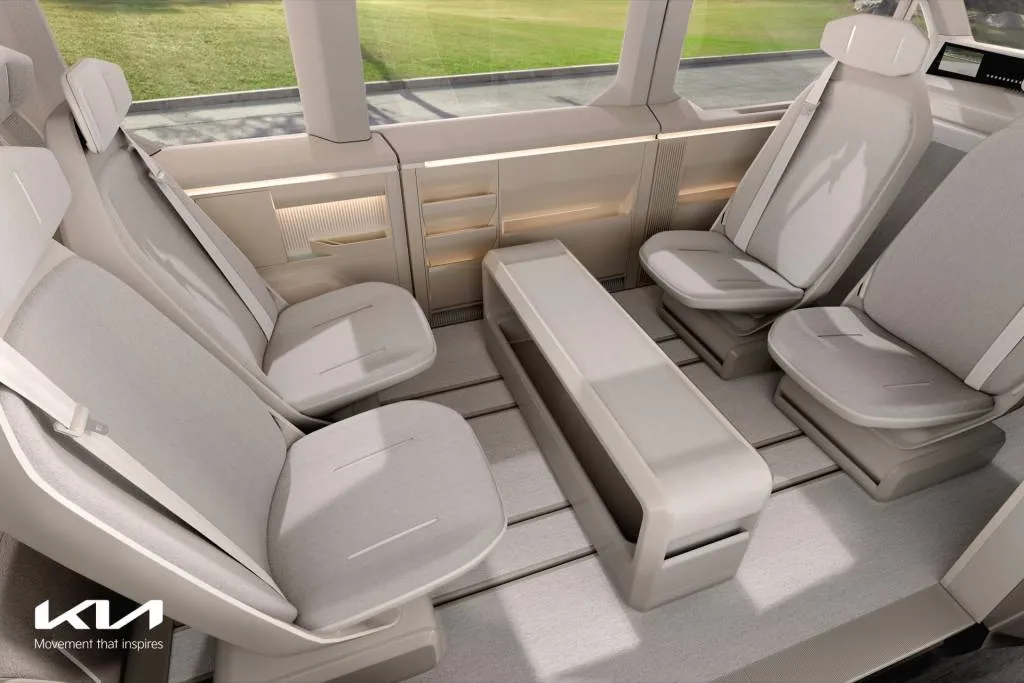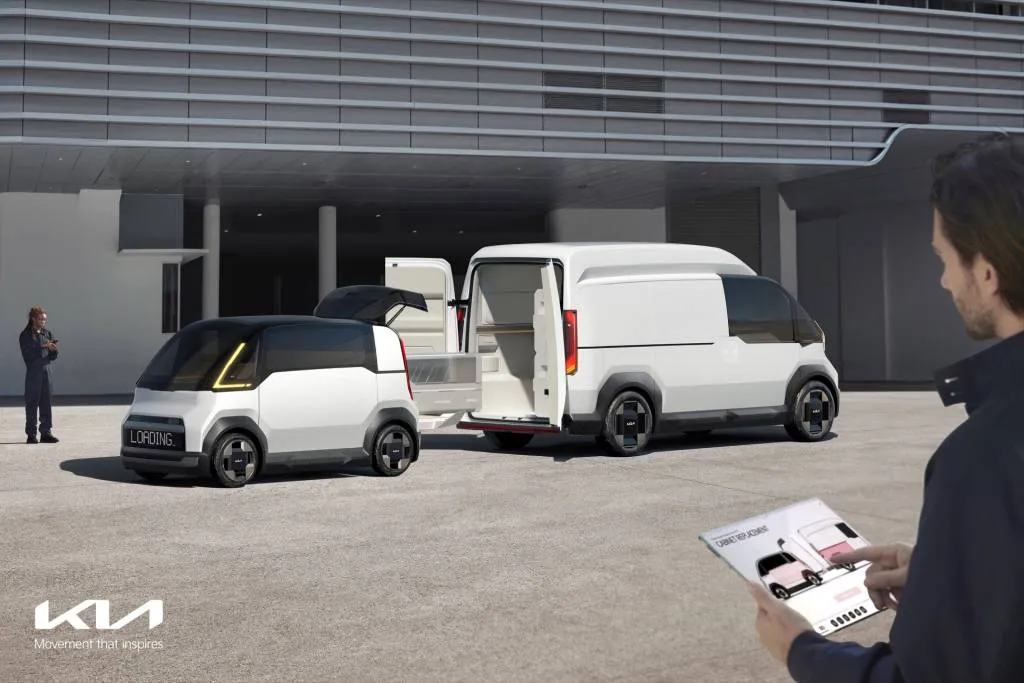Kia has revealed much more about its Platform Beyond Vehicle (PBV) strategy for providing modular vehicles for last-mile delivery and other uses, potentially around the globe. And with the extensive update, on Monday at CES in Las Vegas, it also provided a glimpse of the first several PBV products that are essentially different twists on electric vans.
With EVs intended for work and fleet uses, it’s planning to launch an entire new dedicated PBV business that will oversee the products, software integration, and global partnerships. That will include global conversion (upfit) partners.
While it’s already testing some of these ideas with the taxi-focused Niro Plus in South Korea, the first manufacturing step is Kia’s dedicated PBV factory, due to start production in 2025 set to make up to 150,000 vehicles annually. They’ll be a growing and important piece as Kia targets sales of 1.6 million EVs globally by 2030, with the PBV products including a robotaxi and autonomous-capable ride-hailing vehicle.
It kicks off with the Kia PV5, a versatile, van-like vehicle positioned for ride-hailing and last-mile delivery. In the PV5, a pillarless door opening and low loading height aid access for a cargo and passengers alike.
Kia PBV Concepts
EVs that look beyond the skateboard platform?
The way these vehicles are structured and built may be the biggest departure from conventional EVs and today’s fleet vehicles alike, as there’s no mention of a focus around a skateboard platform. To fit a strategy of using a single vehicle chassis design to fit a whole range of needs, these vehicles would have similar “driver zone” areas, while different purpose-built bodies would connect above and behind.
Further, the company claims that interchangeable “upper-body “life modules” can be connected “via a hybrid electromagnetic and mechanical coupling technology”—so as to effectively use the same chassis for a taxi by day, delivery vehicle by night, and personal recreational vehicle by weekend.
The structure underneath the PBV is weldless, according to Kia, which allows a lot of flexibility in adjustment. Shipment in component kit form would help allow different layouts depending on the region or purpose—which could relate to goods, personal mobility, or logistics.

Kia PV5 Concept
Robotaxi, tall vans, room for custom builds
Kia does plan to make five physically defined versions of the PV5: Basic (wide double doors for cargo), Van (low with maximized height), High Roof (extended for upright loading and driver workspace), Robotaxi (passenger-oriented, operated with Motional), and Chassis Cab (only chassis rails and cab, allowing custom body).
Extending the vision well beyond the PV5, Kia revealed a three-phase roadmap that “can help transform the mobility landscape.” With it, the automaker promises more models, advanced software, and bespoke services.
In a second phase, Kia claims that the PBVs would evolve into “AI-based mobility platforms that use data to interact with users and help keep vehicles updated.”
Also as part of phase two, Kia plans to add a larger PV7 product line, as well as its smallest PV1, with the latter designed “for agile and short-distance logistics transportation.”

Kia PV1 Concept and PV5 Concept
PV1 will be a maneuverability master
The PV1, Kia suggests, will be capable of using its drive modules of minimizing the turning radius in narrow spaces—a hint, perhaps, that it might put something like the recently shown Uni Wheel tech or Hyundai Mobis’ e-Corner in-wheel motor setup to use.
These models may also get an integrated rail system, with “rails” for the ceiling, floor, and side panels allowing even more flexibility.
Software is a big piece of the PBV rollout, too. Kia will help provide fleet management, inventory monitoring, and efficiency-focused intelligent route planning, while charging solutions from the company will incorporate schedules and breaks as specified for different needs.
The company at CES also displayed its Concept EV3 hatchback and Concept EV4 sedan models alongside the production EV6 GT and EV9 models—again cementing the idea that one of those smaller EVs is U.S.-bound.
